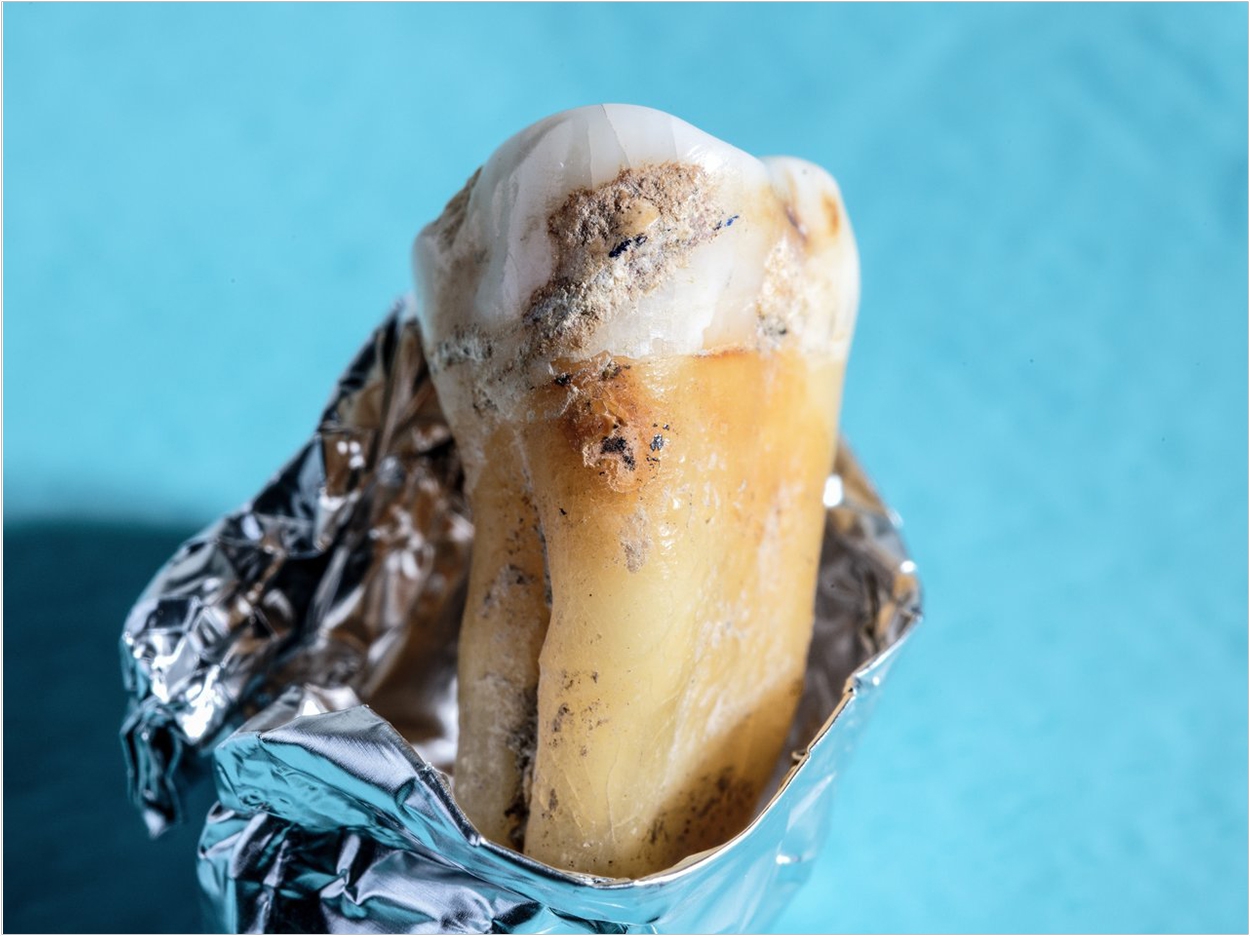
By comparing the fossilized dental plaque of human beings and Neanderthals spanning the past 100,000 years to that of wild chimpanzees, gorillas, and howler monkeys, a team of researchers from 41 institutions in 13 countries is charting the history of the oral microbiome.
According to the researchers, this analysis of dental calculus from more than 120 individuals representing key points in primate and human evolution has revealed surprising findings about early human behavior and novel insights into the evolution of the hominid microbiome.
Working with DNA that’s tens or hundreds of thousands of years old is challenging, the researchers said. Like archaeologists reconstructing broken pots, they added, archaeogeneticists have to piece together the fragments of ancient genomes to reconstruct a complete picture of the past.
For this study, the researchers said, they had to develop new tools and computational approaches to genetically analyze billions of DNA fragments and identify the long-dead bacterial communities preserved in archaeological dental calculus.
Using these tools, the researchers reconstructed the 100,000-year-old oral microbiome of a Neanderthal from Pešturina Cave in Serbia, the oldest oral microbiome successfully reconstructed to date by more than 50,000 years.
“We were able to show that bacterial DNA from the oral microbiome preserves at least twice as long as previously thought,” said James Fellows Yates, lead author and doctoral candidate at the Max Planck Institute for the Science of Human History (MPI-SHH).
“The tools and techniques developed in this study open up new opportunities for answering fundamental questions in microbial archaeology and will allow the broader exploration of the intimate relationship between humans and their microbiome,” said Fellows Yates.
Within the fossilized dental plaque, the researchers identified 10 groups of bacteria that have been members of the primate oral microbiome for more than 40 million years and that are still shared between human beings and their closest primate relatives.
Many of these bacteria are known to have important beneficial functions in the mouth and may help promote healthy gums and teeth. A surprising number of these bacteria, however, are so understudied that they even lack species names, the researchers said.
“That many of the most important taxa are poorly characterized is a surprise to oral microbiologists who have been working on these bugs for years,” said Floyd Dewhirst, senior member of the staff at the Forsyth Institute and a coauthor on the study.
“We’re still learning about new members of this community, and these results give us new species to target for full characterization,” said Dewhirst.
Although human beings share many oral bacteria with other primates, the oral microbiomes of humans and Neanderthals are particularly similar, the researchers said, though there are a few small differences mostly at the level of bacterial strains
When the researchers took a closer look at these differences, they found that human beings living in Ice Age Europe shared some bacterial strains with Neanderthals. The oral microbiome is typically acquired in early childhood from caregivers, the researchers said, so this sharing may reflect earlier human-Neanderthal pairings and child rearing, as has also been already indicated by the discovery of Neanderthal DNA in ancient and modern human genomes.
Researchers found that Neanderthal-like bacterial strains were no longer found in human beings after approximately 14,000 years ago, a period during which there was substantial population turnover in Europe at the end of the last Ice Age.
“Oral bacteria provide an unexpected opportunity for reconstructing the interactions of humans and Neanderthals tens of thousands of years ago, said coauthor Irina Velso, a postdoctoral researcher at MPI-SHH. “The intersection of human and microbial evolutionary biology is fascinating.”
Among the biggest surprises was the discovery that a subgroup of Streptococcus bacteria present in both modern human beings and Neanderthals appears to have specially adapted to consume starch early in Homo evolution, the researchers said.
This suggests that starchy foods became important in the human diet long before the introduction of farming, even before the evolution of modern humans, the researchers said.
Starchy foods such as roots, tubers, and seeds are rich sources of energy, and previous studies have argued that a transition to eating starchy foods may have helped our ancestors to grow the large brains that characterize our species, the researchers said.
“Reconstructing what was on the menu for our most ancient ancestors is a difficult challenge, but our oral bacteria may hold important clues for understanding the early dietary shifts that have made us uniquely human,” said Christina Warinner, lead senior author and a professor with joint appointments in anthropology and microbiome sciences at Harvard University and MPI-SHH.
“Bacterial genomes evolve much more quickly than the human genome, making our microbiome a particularly sensitive indicator of major events in our distant and recent evolutionary past,” Warinner said.
The study, “The Evolution and Changing Ecology of the African Hominid Oral Microbiome,” was published by the Proceedings of the National Academy of Sciences of the United States of America.
Related Articles
Tooth Fossils Reveal 2.4 Million Year Old Diets
Fossils Reveal Clues to Early Hominin Dental Evolution
Neanderthal Fossils Reveal Prehistoric Dentistry












